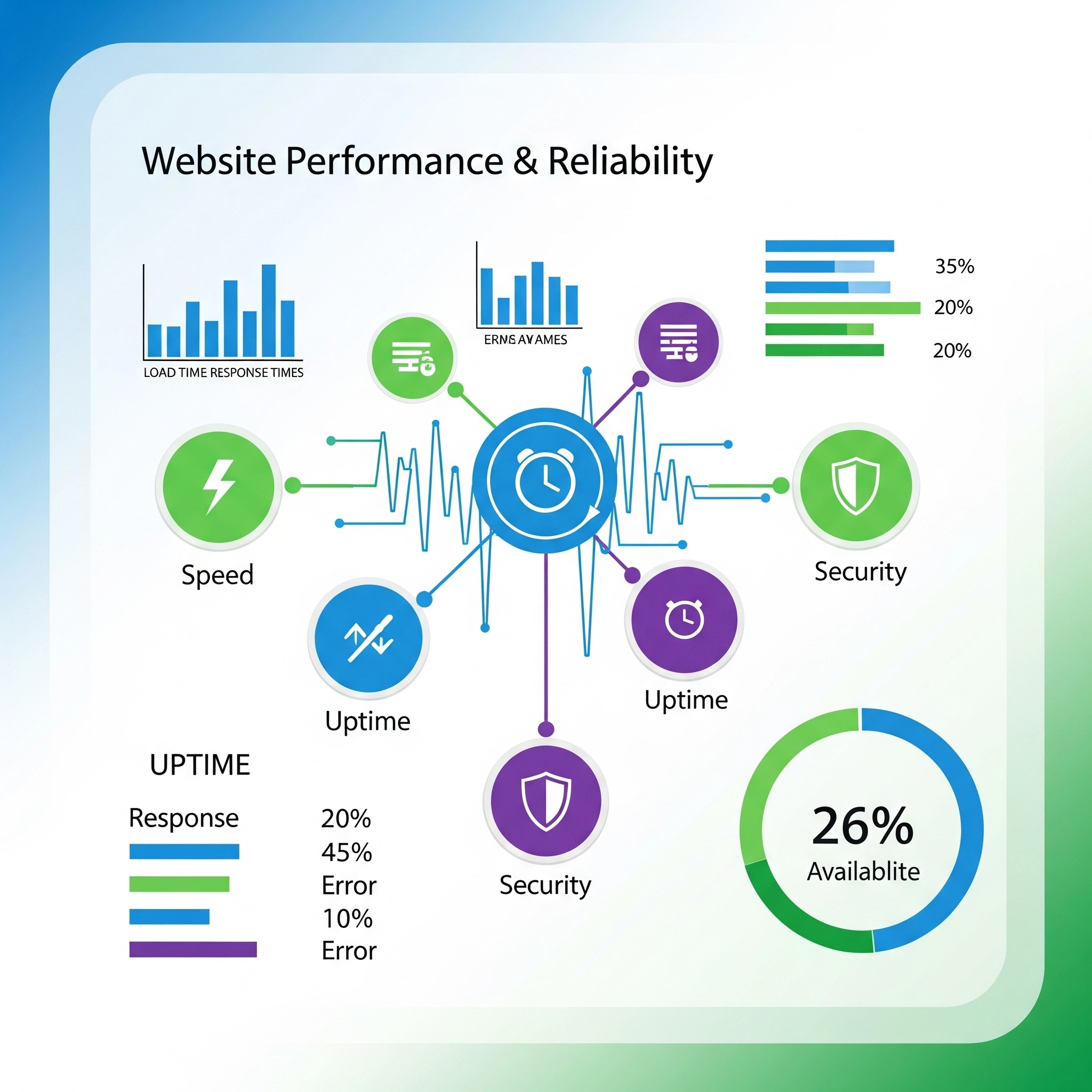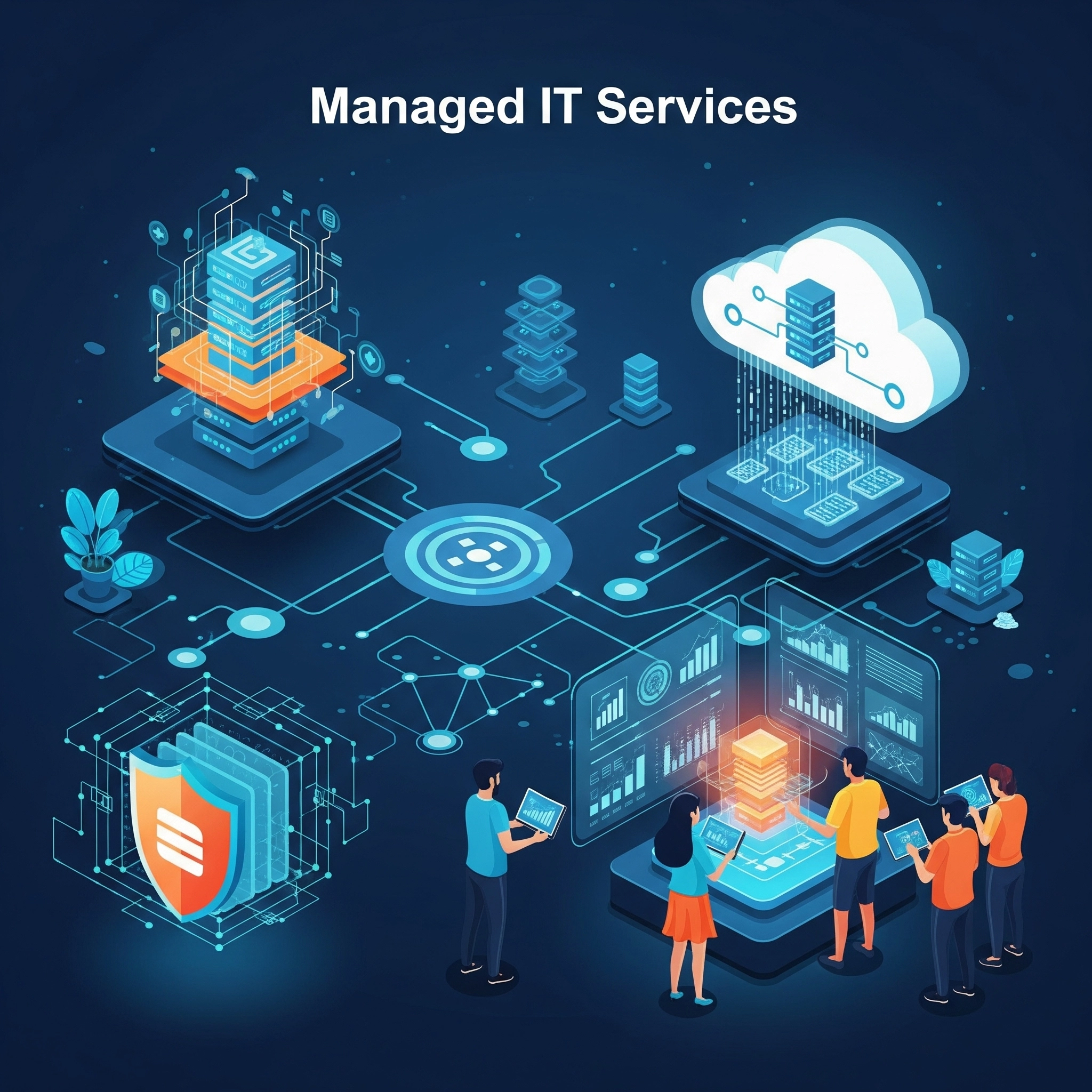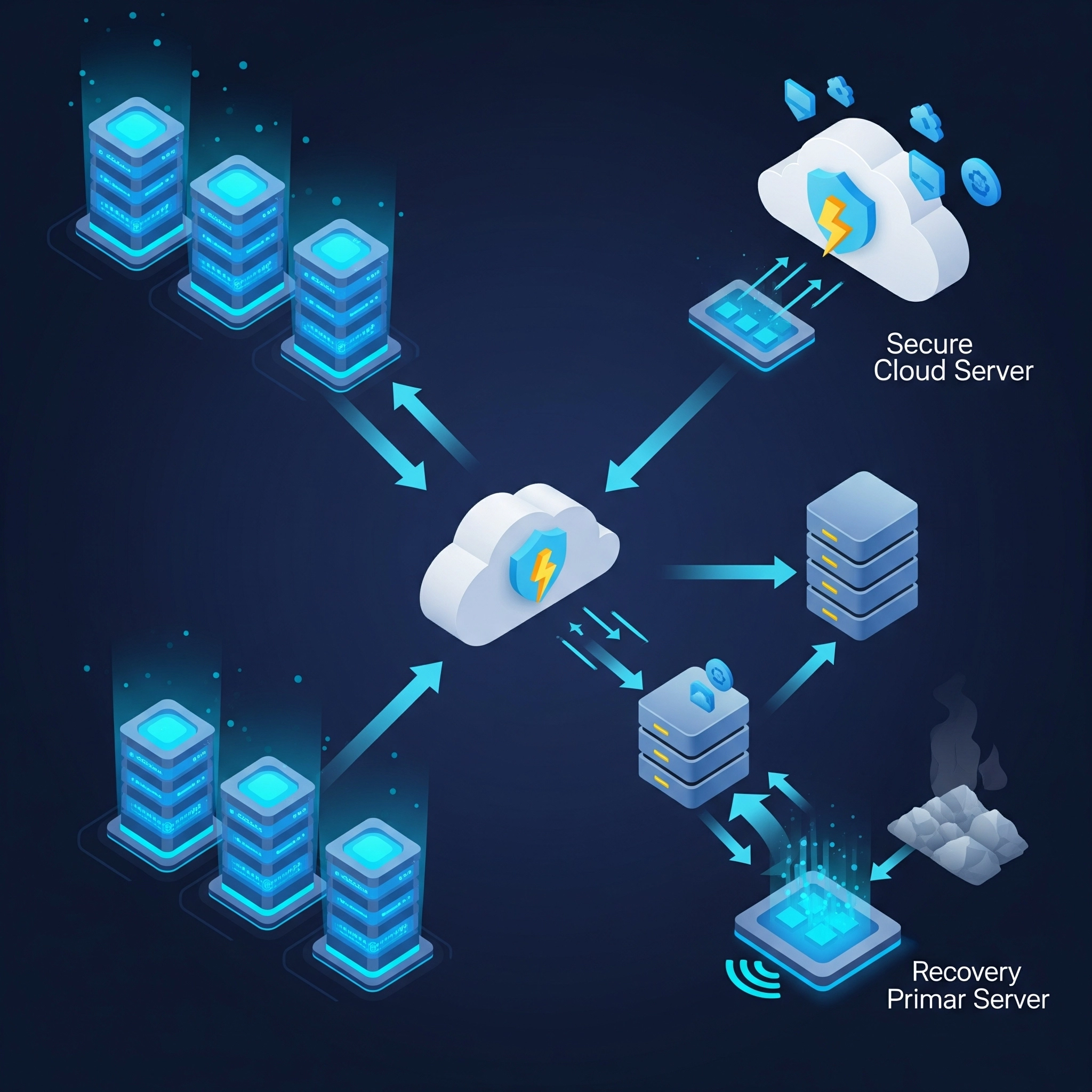Server and Network Solutions
Let`s delve into the detailed and elaborate topic of Server and Network Solutions for your website. This is a crucial area that directly impacts your website`s performance, reliability, security, and scalability.
We`ll break this down into two main sections: Server Solutions and Network Solutions, explaining key concepts, options, and considerations within each.
Server Solutions for Your Website
A server is essentially a powerful computer that stores your website`s files, databases, and applications, and delivers them to users` web browsers when requested. Choosing the right server solution is fundamental.
I. Types of Server Hosting
- Shared Hosting:
- Concept: Your website shares a server with many other websites. Resources (CPU, RAM, storage, bandwidth) are distributed among all hosted sites on that server.
- Pros:
- Cost-Effective: By far the cheapest option, as the cost of the server is shared.
- Ease of Use: Managed by the hosting provider; no technical expertise required for server maintenance.
- Beginner-Friendly: Ideal for small personal websites, blogs, or new businesses with low traffic.
- Cons:
- Performance Issues: "Noisy neighbor" effect – if another website on the same server experiences a traffic surge or poorly coded scripts, your site`s performance can suffer.
- Limited Resources: Capped CPU, RAM, and bandwidth, which can lead to slow loading times under moderate traffic.
- Less Control: Limited access to server configurations and software installations.
- Security Concerns: While providers try to isolate accounts, a vulnerability in one site could potentially affect others on the same server.
- Best For: Personal blogs, small business websites, portfolios, low-traffic sites.
- Virtual Private Server (VPS) Hosting:
- Concept: A physical server is partitioned into several virtual servers, each operating independently with its own dedicated resources (CPU, RAM, disk space). It`s like having your own apartment in a shared building.
- Pros:
- Improved Performance: Dedicated resources mean no "noisy neighbor" effect. More stable and reliable performance than shared hosting.
- Root Access: Full control over your server environment, allowing custom software installations, configurations, and operating system choices.
- Scalability: Easier to upgrade resources (CPU, RAM) as your website grows.
- Better Security: Enhanced isolation compared to shared hosting.
- Cost-Effective (Mid-Range): More expensive than shared, but significantly cheaper than a dedicated server.
- Cons:
- Technical Knowledge Required: Requires some server administration skills, especially if it`s an "unmanaged" VPS.
- Maintenance: You are responsible for software updates, security patches, and backups (unless it`s a managed VPS).
- Best For: Growing businesses, e-commerce sites, web applications, developers who need a customizable environment, websites with moderate traffic.
- Dedicated Server Hosting:
- Concept: You lease an entire physical server exclusively for your website(s). You have complete control and all resources are yours.
- Pros:
- Maximum Performance: Unparalleled speed, reliability, and uptime. No resource sharing whatsoever.
- Complete Control: Full root access, allowing extensive customization, any OS, any software, custom security configurations.
- Enhanced Security: Highest level of isolation and security.
- High Scalability: Can handle massive traffic volumes and resource-intensive applications.
- Compliance: Easier to meet specific regulatory compliance requirements.
- Cons:
- Most Expensive: Significantly higher cost due to leasing an entire physical machine.
- High Technical Expertise Required: You are responsible for all server management, maintenance, security, and troubleshooting (unless you pay for managed dedicated hosting, which adds to the cost).
- Hardware Failures: While rare, hardware failures are your responsibility to manage with the provider.
- Best For: Large enterprises, high-traffic e-commerce sites, complex web applications, financial institutions, media streaming, applications requiring strict security and compliance.
- Cloud Hosting (e.g., AWS, Google Cloud, Azure, DigitalOcean):
- Concept: Your website is hosted on a network of interconnected virtual servers that pull resources from a vast underlying network of physical servers. It`s highly flexible and scalable.
- Pros:
- Extreme Scalability: Resources can be scaled up or down instantly based on demand ("pay-as-you-go" model). Perfect for handling sudden traffic spikes.
- High Availability & Redundancy: If one server fails, your site automatically switches to another server in the cloud, ensuring near-100% uptime.
- Flexibility: Wide range of services (compute, storage, databases, machine learning, etc.) that can be integrated.
- Cost-Effective (for variable loads): You only pay for the resources you consume.
- Global Reach: Easily deploy your website to multiple data centers worldwide, reducing latency for global users.
- Cons:
- Complexity: Can be complex to set up and manage, requiring significant technical expertise, especially for complex architectures.
- Cost Management: While pay-as-you-go is good, costs can quickly accumulate if not properly monitored and optimized.
- Vendor Lock-in: Migrating away from a specific cloud provider can be challenging.
- Security Shared Responsibility: While the cloud provider secures the infrastructure, you are responsible for securing your data and applications on the infrastructure.
- Best For: Websites with unpredictable traffic, applications requiring high availability and global reach, startups, large-scale web applications, companies adopting DevOps practices.
II. Key Server Considerations
- Operating System (OS):
- Linux (e.g., Ubuntu, CentOS, Debian): Dominant for web hosting. Open-source, stable, secure, highly customizable, and cost-effective. Supports LAMP stack (Linux, Apache/Nginx, MySQL, PHP/Python/Perl).
- Windows Server: Necessary if your website uses Microsoft-specific technologies like ASP.NET, MSSQL, or certain .NET frameworks. Generally more expensive and resource-intensive.
- Web Server Software:
- Apache HTTP Server: Most popular web server. Mature, flexible, highly configurable, and widely supported.
- Nginx: Gaining popularity rapidly. Known for its high performance, efficiency, and ability to handle many concurrent connections. Often used as a reverse proxy or load balancer.
- LiteSpeed: A high-performance web server that can be a drop-in replacement for Apache, often offering significant speed improvements, especially with WordPress.
- Database Management System (DBMS):
- MySQL: The most popular open-source relational database for web applications.
- PostgreSQL: Advanced open-source relational database, known for its robustness, extensibility, and support for complex data types.
- MariaDB: A community-developed fork of MySQL, offering similar features and performance.
- MongoDB: A popular NoSQL database, ideal for handling unstructured or rapidly changing data.
- Microsoft SQL Server: For Windows-based environments.
- Security Measures:
- Firewalls (Hardware/Software): To control incoming and outgoing network traffic.
- SSL/TLS Certificates (HTTPS): Encrypts data transmission between the browser and server, essential for security, SEO, and user trust.
- DDoS Protection: To mitigate distributed denial-of-service attacks.
- Regular Software Updates: Patching the OS, web server, database, and all applications to fix vulnerabilities.
- Intrusion Detection/Prevention Systems (IDS/IPS): To monitor and block malicious activities.
- Strong Passwords & Two-Factor Authentication (2FA): For server access.
- Regular Backups: Crucial for disaster recovery. Store backups off-site.
- Security Audits & Penetration Testing: To identify and fix vulnerabilities proactively.
- Scalability and Redundancy:
- Vertical Scaling (Scale-Up): Adding more resources (CPU, RAM) to an existing server. Has limits.
- Horizontal Scaling (Scale-Out): Adding more servers to distribute the load. More flexible and robust. Requires load balancing.
- Load Balancing: Distributing incoming network traffic across multiple servers to ensure no single server is overloaded, improving responsiveness and availability.
- Redundancy: Duplicating critical components (servers, network connections, power supplies) to prevent single points of failure.
- Monitoring and Analytics:
- Server Monitoring Tools: To track CPU usage, RAM, disk I/O, network traffic, application performance, and identify bottlenecks.
- Log Analysis: Reviewing server logs to detect errors, security breaches, and performance issues.
Network Solutions for Your Website
Beyond the server itself, the network infrastructure ensures that users can actually reach your website quickly and reliably.
I. Core Network Components and Concepts
- Domain Name System (DNS):
- Concept: A hierarchical and decentralized naming system for computers, services, or other resources connected to the Internet or a private network. It translates human-readable domain names (e.g., yourwebsite.com) into machine-readable IP addresses (e.g., 192.0.2.1).
- Importance: Without DNS, users would have to remember complex IP addresses to access your site. Efficient DNS resolution is key to fast website loading.
- DNS Providers: Your domain registrar often provides basic DNS, but specialized DNS providers (e.g., Cloudflare DNS, Google Cloud DNS, AWS Route 53) offer advanced features like faster propagation, DDoS protection, and load balancing integration.
- Content Delivery Network (CDN):
- Concept: A geographically distributed network of proxy servers and their data centers. When a user requests your website, the CDN delivers static content (images, videos, CSS, JavaScript) from the server closest to them, rather than the origin server.
- Pros:
- Faster Load Times: Reduces latency by serving content from edge locations.
- Improved User Experience: Quicker access and smoother Browse.
- Reduced Server Load: Offloads traffic from your origin server, saving bandwidth and resources.
- Enhanced Security: Many CDNs offer built-in DDoS protection and Web Application Firewalls (WAFs).
- Better SEO: Page speed is a ranking factor for search engines.
- Cons: Added cost, potential for configuration complexity.
- Examples: Cloudflare, Akamai, Amazon CloudFront, Google Cloud CDN, StackPath.
- Firewalls:
- Concept: A network security system that monitors and controls incoming and outgoing network traffic based on predetermined security rules. Acts as a barrier between a trusted internal network and untrusted external networks (like the internet).
- Types:
- Hardware Firewalls: Dedicated physical devices.
- Software Firewalls: Run on individual servers.
- Web Application Firewalls (WAFs): Specifically designed to protect web applications from common web-based attacks (e.g., SQL injection, cross-site scripting). Often integrated with CDNs.
- Importance: Essential for protecting your server from unauthorized access and malicious attacks.
- Load Balancers:
- Concept: Devices or software that distribute network traffic efficiently across multiple servers. They ensure no single server becomes a bottleneck, improving responsiveness and maximizing uptime.
- Functionality: Directs traffic to healthy servers, can remove unhealthy servers from the pool, and enable horizontal scaling.
- Importance: Crucial for high-traffic websites and applications requiring high availability.
- VPN (Virtual Private Network):
- Concept: Creates a secure, encrypted connection over a less secure network, like the internet.
- Use for Websites: Not typically used by public users to access your website. However, a VPN can be used by administrators to securely access the server for management purposes.
II. Internet Service Provider (ISP) and Data Center Considerations
- Bandwidth:
- Concept: The maximum amount of data that can be transferred over a network connection in a given amount of time (usually measured in Mbps or Gbps).
- Importance: Insufficient bandwidth leads to slow loading times and degraded user experience, especially with high traffic or rich media content. Ensure your hosting plan offers adequate bandwidth.
- Uptime:
- Concept: The percentage of time that a server or service is operational and accessible.
- Importance: A critical metric for website reliability. Look for hosting providers guaranteeing 99.9% uptime or higher. This often translates to only a few minutes of downtime per year.
- Latency:
- Concept: The time delay between a user`s action and a web server`s response.
- Factors: Physical distance between user and server, network congestion, and network infrastructure quality.
- Mitigation: Using CDNs, choosing a data center geographically closer to your target audience.
- Data Center Location:
- Importance: Choosing a data center that is geographically closer to your primary target audience reduces latency and improves website speed for those users.
- Considerations: Redundancy, power supply, cooling, physical security of the data center.
- Network Architecture (for dedicated/cloud):
- Redundant Network Paths: Ensuring multiple routes for data to travel to prevent single points of failure.
- High-Speed Interconnects: Fast connections within the data center between servers and network devices.
Putting It All Together: Choosing the Right Solution
The "best" server and network solution is highly dependent on your specific needs, budget, and future plans:
- Assess Your Website`s Needs:
- Traffic Volume: Current and projected daily/monthly visitors.
- Content Type: Static pages, dynamic content, e-commerce, streaming media, heavy databases.
- Application Complexity: Simple blog, complex web application, SaaS platform.
- Performance Requirements: How fast does it need to be? What are your bounce rate tolerance and conversion goals?
- Security Needs: Handling sensitive user data? Regulatory compliance (PCI DSS, HIPAA)?
- Scalability Needs: Do you anticipate rapid growth or seasonal spikes?
- Budget: How much can you realistically spend on hosting and related services?
- Match Needs to Solutions:
- Small personal blogs, portfolios, new businesses: Start with Shared Hosting.
- Growing businesses, e-commerce, medium-traffic blogs, basic web apps: Move to VPS Hosting.
- Large enterprises, high-traffic e-commerce, critical web apps, specific compliance: Consider Dedicated Servers.
- Applications with unpredictable traffic, global reach, high availability, advanced services: Embrace Cloud Hosting.
- Don`t Forget the "Soft" Skills & Services:
- Managed vs. Unmanaged Hosting: Do you have the technical expertise (or staff) to manage a server, or do you need the provider to handle maintenance, security, and updates? Managed solutions cost more but free up your time.
- Customer Support: A responsive and knowledgeable support team from your hosting provider is invaluable when things go wrong.
- Service Level Agreements (SLAs): Understand the uptime guarantees, response times for support, and penalties for not meeting these guarantees.








 Call Now
Call Now

